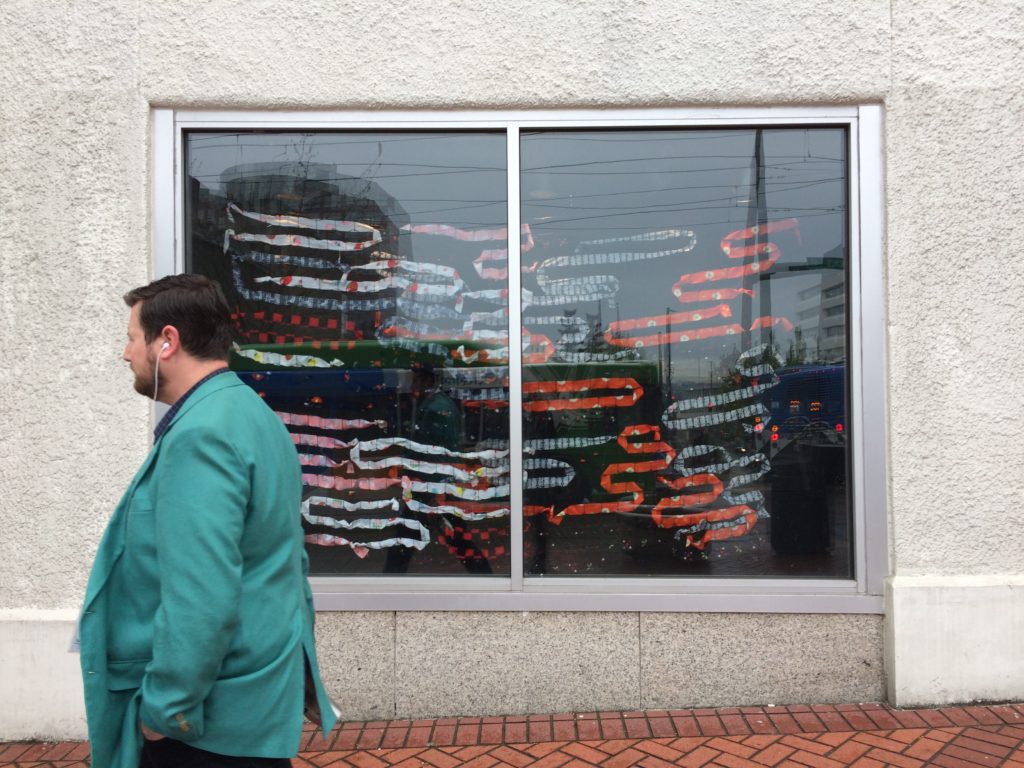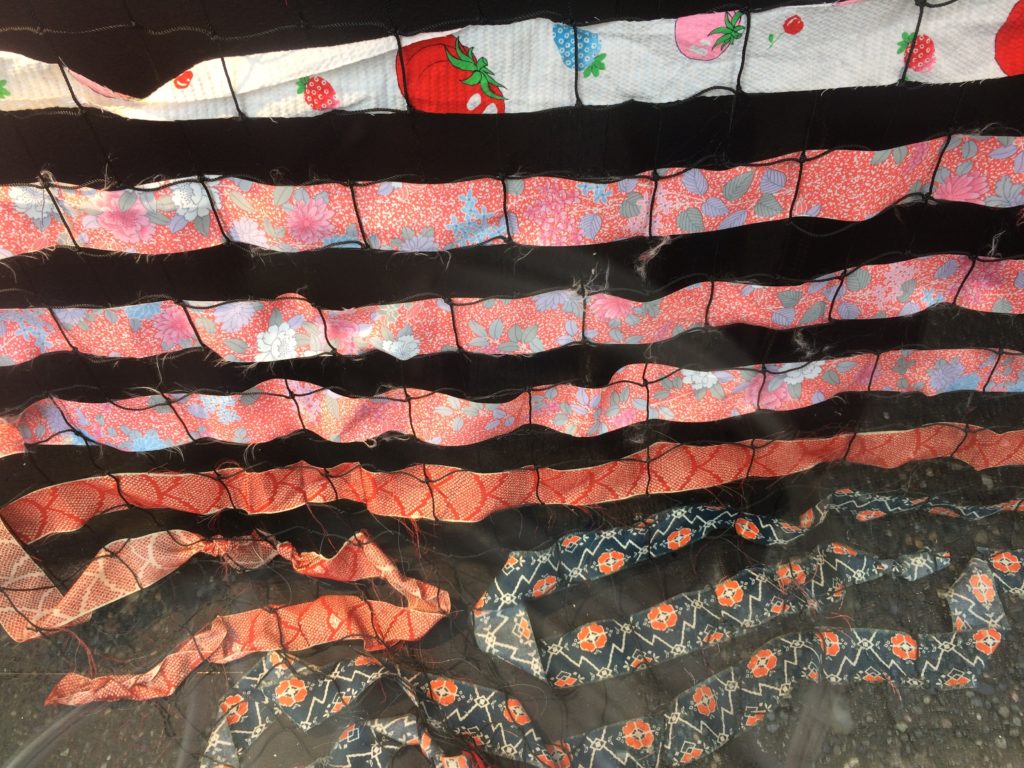The Camouflage Net Project points to the practice of concentration camps in the U.S., prison labor and racial bias towards immigrants of color.
Streetside Artscape:
Tara Tamaribuch / The Camouflage Net Project
Pantages Display Cases, 9th & Commerce
April 18, 2018 – July 18, 2019
During World War II, President Franklin D. Roosevelt signed Executive Order 9066, which led to the incarceration of Japanese descendants living along the west coast. Three of the concentration camps set up to imprison 120,000+ men, women, and children included camouflage net factories where Japanese Americans made tens of thousands of hemp nets as prison labor for the U.S. Army.
As an artist interested in identity, object-making, and materiality, the history of nisei (second-generation) incarcerees doing handiwork for prison labor is significant. As a sansei/yonsei (third/fourth generation), I seek to transcend time and place, connecting my working hands to those of my incarcerated community.
I wove kimono and yukata fabric, instead of hemp, into netting to send pride of heritage back to my community, as the trauma of incarceration had brought shame and pushed us to lose traditional culture as we integrated into white America.
As camouflage protects people and objects by blending them into their surroundings, this camouflage is a metaphor to protect all people and to see them as interconnected with each other and the world.
The Camouflage Net Project was first made for the Seattle Center Sculpture Walk, tenting the underside of a glass walkway, and responding to the 75th anniversary of EO 9066 and the Muslim Ban in 2017. Since then, the project has shifted in time, with the inhumane treatment of immigrants and asylum seekers at the U.S. southern border. The Trump administration has been incarcerating children and separating families, much like the history of Japanese American incarceration.
This year, the project features two new media components. In this installation at the Pantages Theater in Tacoma, the project features a slideshow of incarcerees making the nets and their everyday lives, connected to images of asylum seekers in similar predicaments and prison laborers. At the Northwest African American Museum, from May to August 2019, the project features a sound installation using Densho oral histories of former incarcerees, sharing their memories of working in the net factories and their everyday lives as prisoners.
See more of Tara’s work at: www.taratamaribuchi.com
This is installation was funded, in part, by Densho and ArtsFund



You must be logged in to post a comment.